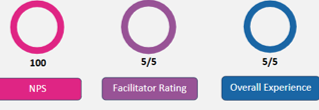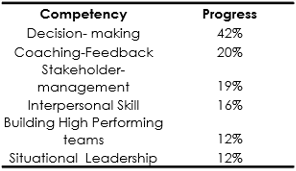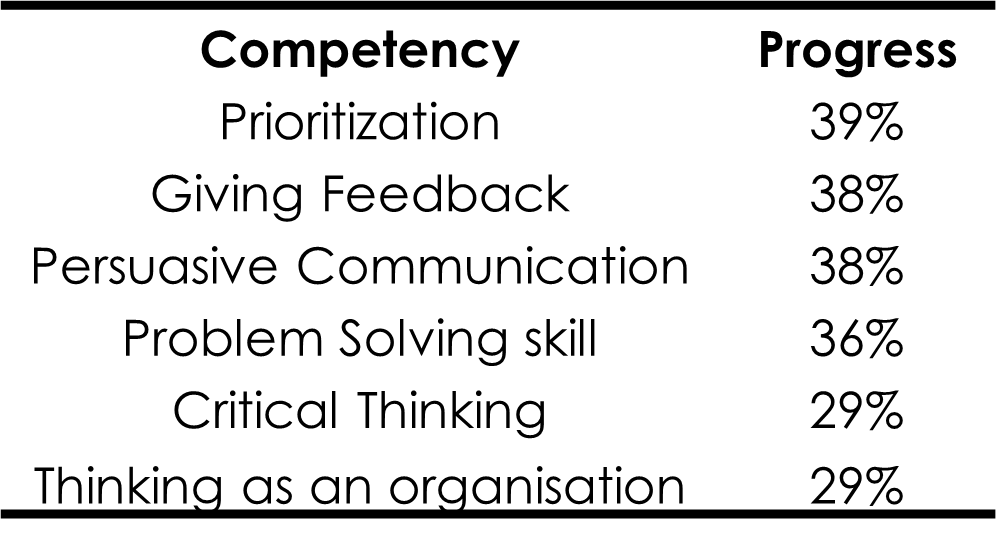Why Making Learning Stick Matters (And how to do it)

It’s a no-brainer! Making learning stick is important because it ensures that the knowledge and skills acquired during learning experiences are retained and can be applied effectively in real-world situations.
Over time, individuals tend to forget what they have learned, and the investment made in learning and development may not provide a return on investment (ROI).
In the context of leadership development and executive coaching, making ensuring that learning sticks is particularly important because it can lead to incremental improvements in decision-making, problem-solving, and performance; leading to an overall snowballing effect for effectiveness as well as satisfaction for everyone all stakeholders involved with the organization.
Through our experience of helping hundreds of clients execute L&D interventions across seniority levels, we’ve noticed a pattern of impact maximization in those cases where there was:
1. Self-Motivation
2. Bit-Sized or Self Paced Learning Modules
3. Learning combined with practical implementation
4. Organisation, Peers, and Team support to make learning and practice a recursive phenomena
5. Organization-level support and recognition for learning
When we create systems for making learning stick, it can contribute to a culture of continuous learning and improvement, where individuals are motivated to seek out new knowledge and skills to enhance their personal and professional growth. Ultimately, learning that sticks can lead to more effective and successful leadership, as well as improved organizational outcomes.
Understanding How Learning Happens

To make learning stick, it’s crucial to understand how the brain processes and retains information. Let us explore the science of learning and memory, including key concepts like encoding, storage, and retrieval. We will also debunk common myths and misconceptions about learning.
The human brain is an amazing organ capable of processing and retaining vast amounts of information. The process of learning involves three critical steps: encoding, storage, and retrieval.
- Encoding refers to the process of converting information into a form that the brain can store. This process involves attention, perception, and understanding. When information is encoded, it is transformed into a kind of “neural code” that can be stored in the brain.
- Storage refers to the process of retaining information in the brain over time. This process involves the consolidation of information into long-term memory. Research has shown that there are several different types of memory storage, including sensory memory, short-term memory, and long-term memory. It has been suggested by researchers that much of the storage and organization of memory happens during sleep.
- Retrieval refers to the process of accessing information that has been stored in memory. This process involves the activation of neural circuits that are associated with the stored information.
Now let’s debunk some common myths and misconceptions about learning. One common myth is that individuals have a fixed amount of intelligence and cannot improve their cognitive abilities, and thus cannot improve their ability to make learning stick. In reality, research has shown that the brain is capable of learning and adapting throughout life.
By scientifically understanding the biological processes of learning and memory, individuals and organizations can design more effective learning experiences that lead to long-term retention and application of knowledge and skills.
Strategies for Making Learning Stick

We will now explore various strategies for making learning stick. The most important thing to keep in mind is “relevance”, which involves aligning learning objectives with real-world problems and challenges that the learner faces, using experiential learning methods, and then connecting learning to personal and organizational goals.
For example, when we at Meeraq work with clients to develop employee professional skills, the first thing we focus on in a session is what we call ‘creating hunger’.
This is our way of motivating learners by helping them identify the relevance of the learning session for them.
Our learning sessions are a vibrant conversation where learners bring their experiences to the forum and build a unique ‘relevance’ for themselves and the cohort they participate in.
Encouraging active engagement involves facilitating discussions, debates, and brainstorming sessions, encouraging learners to ask questions and provide feedback, and incorporating collaborative and cooperative learning activities.
At Meeraq, we come from a rich legacy of coaching and our facilitators leverage on that skill to create a curious and safe space for learners to engage in and learn.
Besides active engagement, a lot of memory depends on frequency or repetition. Practising involves providing opportunities for learners to apply what they have learned, providing feedback and coaching to reinforce learning, and using deliberate practice and spaced repetition to enhance retention. This strengthens the associated neural circuits related to the learning.
At Meeraq, in our professional skills trainings, we pay special attention to helping learners take what they learnt in the classroom into the real world, and practice those skills and mindsets.
To reduce the friction to practice, we close each learning session with a segment on helping learners plan actions in the coming days which includes identifying situations for practice and success measures.
In the course of practice, learners will encounter blocks, these could be internal or external. Acknowledging this phenomenon, we support them through this journey with individualized laser coaching. These coaching sessions are a huge hit with our learners.
Fostering a learning culture involves creating an environment that values continuous learning and improvement, encouraging experimentation, risk-taking, and innovation, and recognizing and rewarding learning achievements.
Overcoming Common Barriers to Learning

Even with the best intentions, there are common barriers to learning that can hinder retention. Some of these barriers include carving out dedicated time for learning, gaining access to resources and support, addressing fears of failure or change, and fostering a culture of openness and curiosity.
Besides supporting learners to overcome personal barriers to learning through coaching support, we partner with clients and explore what the client can do to maximize the outcome of the learning intervention.
Conclusion
While L&D practitioners are always concerned about the RoI of the interventions they have deployed, and whether the learning actually sticks or not, we at Meeraq believe, through the transformation journeys we have been fortunate to witness, that making learning stick is possible, even at scale. What one needs is scientifically backed well-designed programs, the right set of support mechanisms, and the good intention to nurture and support learning.












